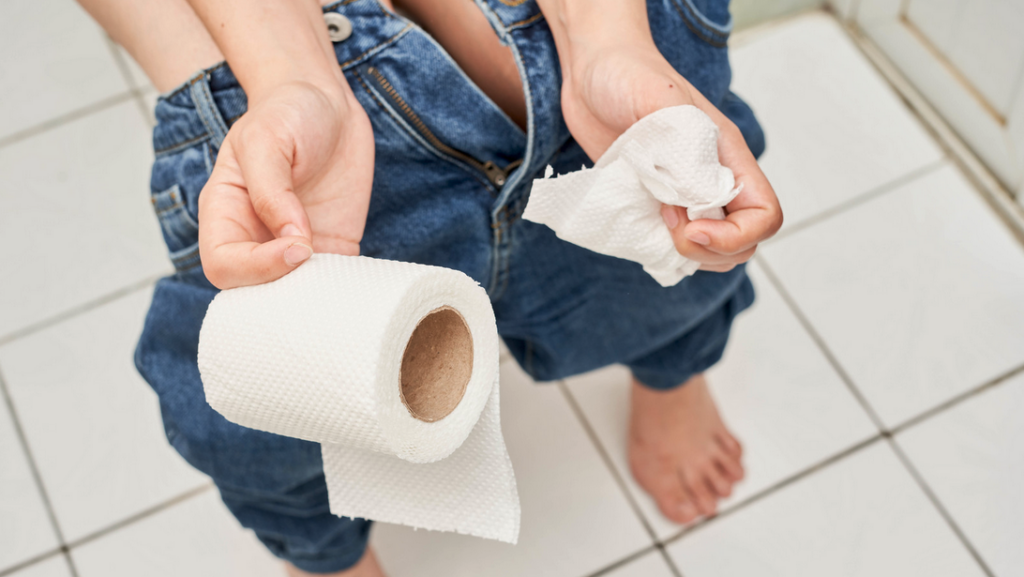I’m going to let you in on a little secret. The first time I went to Japan, I had little idea of how to use a squat toilet. It was the early-mid 1990s, and the World Wide Web, although available, was still in its infancy and nowhere near what it is now. So I knew squat toilets existed, and I knew I had to squat (well, duh!) to use one, but that was about it. Let’s just say it wasn’t one of my more graceful moves of the day (or year), and I’m happy I didn’t wind up getting pee on the floor or on my pants. 😉
As we’ve traveled to other places, or at least studied other places, I’ve learned it’s better to know the “potty rules” before you get there, so you’re not stuck with your pants down (you see what I did there?), or at least so you know what’s happening around you, even if you don’t personally take part. Here are some of them:
Squat toilets
May as well start there. Although you can still find a nice amount of Western-style toilets in Japan nowadays, you’ll still find squat toilets, as well. They’re also prevalent in Singapore, Thailand and Taiwan.
Toilet slippers
If there’s one thing you can say about the Japanese, it’s that they’re fastidious. This is a country where they’ll hold their trash until they get home, if they can’t find a trash can on the street.
The same level of cleanliness (more, actually) happens in the home or hotel. In either, you’re expected to leave your everyday shoes at the door, and potentially put on house slippers if they’re left for you (the reason is twofold: if the floors are tatami mats, shoes will stain or crush them; expect to walk in your socks. If floors are wood, laminate, carpet, etc., they want to keep them as clean as possible. So, no shoes; just slippers).
However house slippers or no, when you use the restroom, you’re expected to put on toilet slippers. The bathroom is probably one of the germiest places in the home. So you wear special slippers just for that room, and take them off before you leave again, to keep the germs from the bathroom floor from being spread to other parts of the home or hotel room
The sound button
Bidets
If you’ve been to Japan, you probably know about washlets – toilets with built-in bidet functions to clean your backside (and ladies, there are often options to clean your “front bottom” too).
However much of Europe, and as far away as Argentina and Venezuela, is known for bidet use, as well. Their bidets are usually separate entities, near the toilet. They’re also used to clean your nether regions, but you usually have to straddle the ceramic. Some bidets are designed with a stopper so you fill the ceramic with water; others have a nozzle (we also found the nozzle style in Vietnam; it must be the French influence).
Wiping with your hands
In some countries, toilet paper and/or bidets aren’t options. In certain Muslim countries, you need to use a small pot of water to cleanse yourself.
Granted, this isn’t the most sanitary way to get yourself clean, but it’s the rules of the Muslim and Hindu faith in some parts of the world. In India, they touch the waste with their fingers of their left hand and then wash their hands. This also explains why you don’t shake hands with your left hand.
Washing private parts after urinating
You may find yourself in a part of the world where people wash their private parts after urinating. Women might not see it because it would be done in the stall. But for men…
It’s called Istinga (or Istinjaa`) and is obligatory for removing impurity. “It can be done with toilet paper, or a stone, or water. It is preferable to do Istinjaa` first with paper, or stone, or the like, then to wash the private part with water until making sure that the impurity has been removed.” (from https://www.aliftaa.jo/QuestionEn.aspx?QuestionId=1062)
If you see a bathroom fixture that looks like a “toilet hose” (it’s called a “shatafa”), it’s used for Istinga.
Toilet attendants
In Europe, the majority of bathroom attendants are women. Just be aware, guys.
Flushing rules in Switzerland
Although not a law, a general rule of thumb in Switzerland is to not flush after 10pm. It’s for noise reduction throughout the night, and reflects the country’s priority for community well-being and commitment to gracious behavior (which is why I love Switzerland).
Pay toilets
However pay toilets are still alive and well in other parts of the world. Save your coins (although some pay toilets take credit cards nowadays).
Paying for toilet paper
In Taiwan, the toilets are free but you may have to pay for the toilet paper.
Grabbing some toilet paper
Even if you don’t have to pay for your toilet paper, heads up that sometimes you have to grab some (granted, for free), before you enter the stall. If you’re lucky, it’s just from a jumbo roll. If you’re unlucky, some little old lady gives it to you and who knows if she’ll give you enough (true story – happened to me in Vietnam).
BYO toilet paper
In some countries, such as China and South Korea, you just have to bring your own toilet paper. We were told this before our trip to Cuba, and I’m glad we followed through. Same thing happened during our visits to Vietnam, Cambodia and Laos, here and there (after Cuba, I ALWAYS make sure I have a travel sized mini roll with me, just in case).
Where to put the toilet paper
So much talk about toilet paper! Last one, promise! In some less industrialized countries of Southeast Asia, South America, as well as some Mediterranean countries such as Greece, Turkey, Morocco and Ukraine, the only thing that’s supposed to be flushed is human waste. Everything else gets put in the trash can in the stall/next to the toilet, etc. Their plumbing just can’t handle toilet paper, so they ask that your waste paper go in the trash (it’s always covered; and somehow doesn’t smell).
BYO soap
In Romania, many restrooms don’t provide soap; you’re expected to bring your own.
Gender-neutral restrooms
If it’s yellow…
Water conservation is a big deal in multiple parts of the world. On the Mariana Islands, they have a simple but efficient water-saving slogan: “If it’s yellow, let it mellow; if it’s brown, flush it down.” Signs are posted in many bathrooms across the islands to remind visitors.
Portugal
In Portugal, it’s against the law to pee in the ocean (how are they gonna know???).
Don’t forget to flush!
In Singapore, it’s against the law to not flush. Non-flushers could earn a $150 ticket and if you don’t pay, you could be sent to jail.
Those wacky Germans and their toilet rules
“For Germans, maintaining order and cleanliness is a way of life, and this is reflected in their approach to toilet etiquette.” A German website made an entire page with their toilet rules (head up: has stick figures that are mildly NSFW). It goes over:
- Who stands, who sits?
- How to sit down to pee? (Germany prefers men sit to urinate, for improved lavatory hygiene)
- The German “Angst”
- No smoking on German toilet
- How to use the toilet brush?
- Where to put the waste in toilet?
- Toilet lid or seat – which one to put down?
- Which button to push?
- How to wash your hands?
- Sit down to pee & keep good humor!
Feature photo: Marco Verch Professional Photographer / original photo / license
Want to comment on this post? Great! Read this first to help ensure it gets approved.
Want to sponsor a post, write something for Your Mileage May Vary, or put ads on our site? Click here for more info.
Like this post? Please share it! We have plenty more just like it and would love it if you decided to hang around and sign up to get emailed notifications of when we post.
Whether you’ve read our articles before or this is the first time you’re stopping by, we’re really glad you’re here and hope you come back to visit again!
This post first appeared on Your Mileage May Vary
Join our mailing list to receive the latest news and updates from our team.

